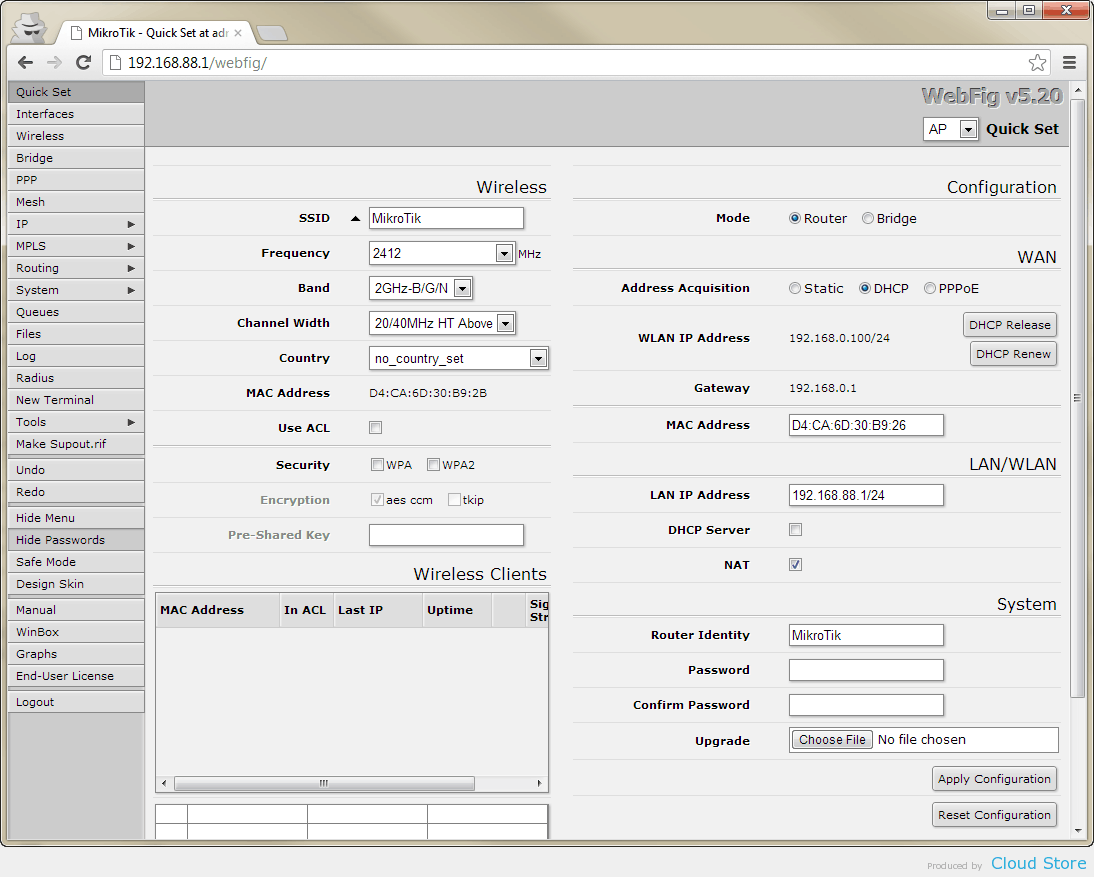
In the “Name” field enter your VPN client username, in “Password” field we enter our user’s password. In the same “PPP” window go to “Secrets” tab, click on the blue plus sign – a new window will appear where we define individual VPN user profile. In the “Remote Address” field choose the VPN range name that we made earlier. In the newly opened window in the “Local Address” field click on the down arrow on the right and enter your VPN gateway address. Now open “PPP” section, go to “Profiles” tab and double click on “default” profile. In the “Addresses” field define your necessary IP address range (don’t forget to leave out one address for the gateway). In the “Name” field input any name you want for your range, take note of it. Go to “IP > Pool” section, click on the blue plus sign in the new window – another window will open. Note that your VPN IP address range must be different from other services that are used on the device ( for example DHCP) Next step – defining your VPN client IP address range, gateway and VPN client profiles for each user.
Winbox v6.7 password#
In the “IPsec Secret” field enter and take note of your unique password – It will be required for your VPN clients, everything else left at default values. Tick the “Enabled” setting, in the “Default Profile” section select “default”. Go to “PPP > Interface” section of winbox, press on “L2TP Server” button – a new “L2TP Server” configuration window will open:
Winbox v6.7 android#
In the current example we will show how easy it is to setup and configure an L2TP/IPsec server on a MikroTik router with default configuration (RouterOS 6.16 or later) for use with roadwarrior connection (works with Windows, Android an IOS) using winbox interface. Basic L2TP/IPsec server configuration on a MikroTik device. "Hackers infect 500,000 consumer routers all over the world with malware". "F.B.I.'s Urgent Request: Reboot Your Router to Stop Russia-Linked Malware".

Winbox v6.7 Pc#
Also, a return to PC add-in boards with the CCR2004-1G-2XS-PCIe. 2022 - Release of CCR 2000-series using ARM64-architecture CPUs and featuring 100GbE capability in the CCR2216.Tilera-base CCRs would eventually be released with up to 72-cores at 1GHz. 2012 - Release of Cloud Core Router (CCR) 1000-series, using Tilera's TILE-Gx many-core CPUs.


Original RouterBoard was based on the Geode CPU, but later used MIPS.
Winbox v6.7 software#
Winbox v6.7 full#
These early SBCs could be expanded and/or used as components of other systems, but as time passed, this RouterBoard/RouterOS platform would develop into a full line network equipment. In 2002, MikroTik began producing their own networking-focused low-power single-board computers, branded RouterBoard, that ran RouterOS. The earliest versions of RouterOS were based on Linux 2.2. MikroTik was founded in 1996 by John Tully and Arnis Riekstiņš in Riga, Latvia, developing networking software for x86 PC hardware that would develop into a product called RouterOS.


 0 kommentar(er)
0 kommentar(er)
